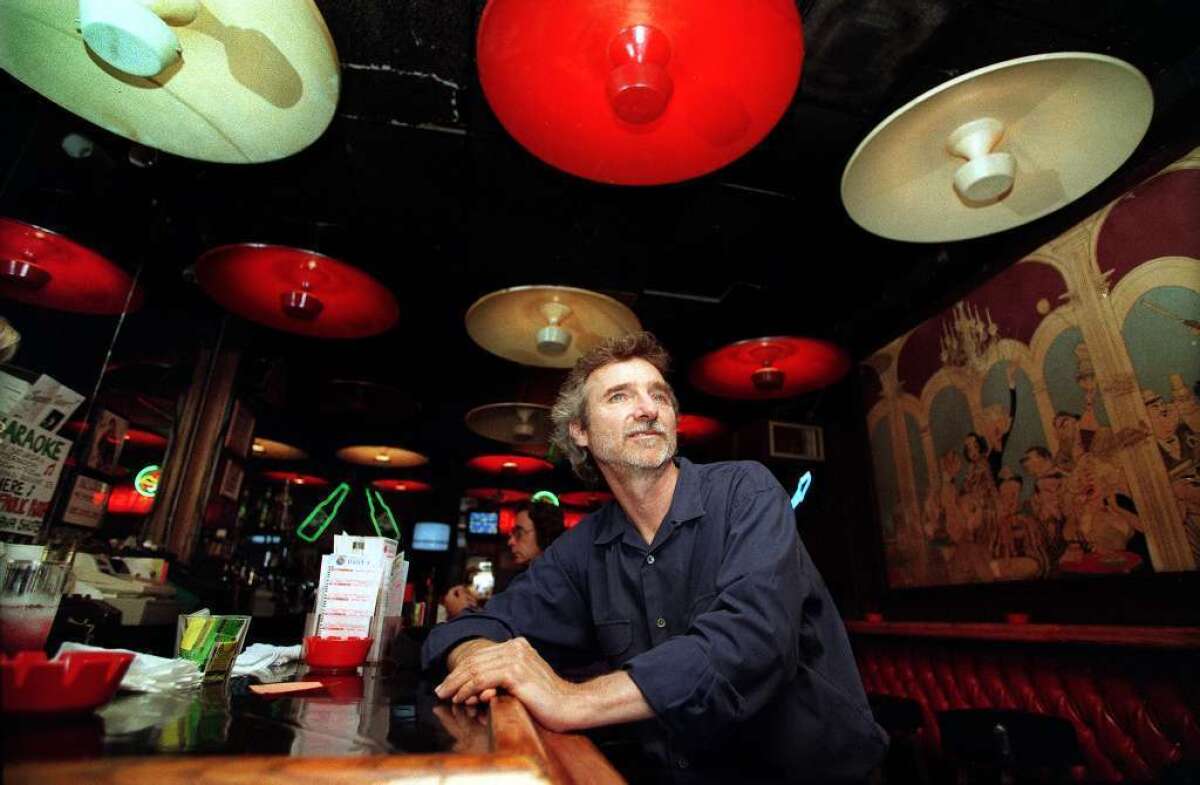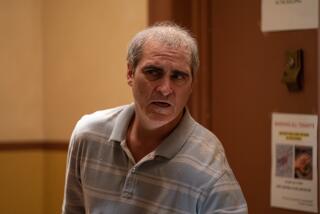Appreciation: Curtis Hanson, a classicist and chameleon among Hollywood directors

Curtis Hanson was not a filmmaker known for hogging the spotlight, which is why it felt like a rare treat to catch an on-screen, front-and-center glimpse of him just a few months ago, while scanning the extras on my Criterion Collection disc of Nicholas Ray’s “In a Lonely Place” (1950). There, in a featurette filmed in 2002, Hanson wandered the grounds of West Hollywood’s famous Villa Primavera apartment complex and paid loving tribute to a picture that had transfixed him since he first saw it at age 14, and which would become a key inspiration on his own Los Angeles noir classic, “L.A. Confidential” (1997).
The Ray influence is not exactly hard to discern in Hanson’s pitch-perfect James Ellroy adaptation, which offered its own darkly sardonic view of the movie industry, as well as its own grim understanding of the physical and emotional violence that men can inflict on the women they claim to love. It’s hard to watch one of “L.A. Confidential’s” most wrenching scenes, in which Det. Bud White (Russell Crowe) brutally attacks his lover, Lynn Bracken (Kim Basinger), and not sense the hovering specters of Humphrey Bogart and Gloria Grahame, even if Hanson ultimately granted his characters a sunnier ending.

But the director’s sense of kinship with Ray went beyond a shared set of thematic preoccupations or a favorite milieu. Speaking in the featurette about why he so admired “In a Lonely Place,” Hanson noted the seamlessness of its craft: “One feels that there is almost an absence of acting, an absence of technique.” It was a compliment of which this great writer-director and consummate classicist proved no less worthy before his death on Tuesday at age 71.
Hanson came to the industry steeped in a deep love of Hollywood genres, heavily influenced by directors like Ray, Hitchcock, Ford and Hawks. His first screenplays, including 1970’s “The Dunwich Horror” and 1972’s “Sweet Kill” (with which he would make his directing debut), were produced under the imprimatur of the great B-movie impresario Roger Corman. Years later, he collaborated with director Sam Fuller on the script for “White Dog” (1982), whose trenchant inquiry into racial hostilities would resurface again in Hanson’s own work behind the camera.
His 1983 Tom Cruise sex comedy “Losin’ It” aside, Hanson the director settled into a B-thriller groove with “The Bedroom Window” (1987) and the Rob Lowe-James Spader vehicle “Bad Influence” (1990), a pair of Hitchcock homages styled after “Rear Window” and “Strangers on a Train,” respectively. His reputation as a purveyor of schlock was elevated several notches by his first big hit (and still the best title of his career), “The Hand That Rocks the Cradle,” a deliciously creepy 1992 revenge thriller that foregrounded Rebecca De Mornay as a villain for the ages. Yet the picture is no less memorable today for having introduced moviegoers to a little-known actress named Julianne Moore, whose character was killed off far too early, but not too early to be remembered.

If “The Hand That Rocks the Cradle” offered an early sign that Hanson had an unusually deft way with actresses, it was amply confirmed in his 1994 whitewater-rafting thriller, “The River Wild,” for which he had the inspiration to cast Meryl Streep in an action-driven, change-of-pace role. And it was borne out too by “L.A. Confidential,” even if Basinger’s Oscar-winning performance emerged as merely one of that picture’s numerous across-the-board pleasures.
Brilliantly adapted from Ellroy’s labyrinthine detective novel, “L.A. Confidential” remains a neo-noir classic, a poisoned valentine to the city where the director grew up, and Hanson’s consensus masterpiece. With its Byzantine twists, its stupendous performances by Crowe, Basinger, Guy Pearce and Kevin Spacey, its luxuriant period mise-en-scène and its incredible stylistic verve, the movie didn’t just tell a ripping good yarn; it seemed to exist in a dazzling meta-universe all its own. Watching it for the first time, you couldn’t help but feel the uncanny, through-the-looking-glass sensation it was honoring, satirizing and making Hollywood history all at once.
Critics compared the film to “Chinatown” and showered it with accolades (“L.A. Confidential” remains one of the few movies to sweep picture, director and screenplay honors from the Los Angeles Film Critics Assn., the New York Film Critics Circle and the National Society of Film Critics). Those prizes must have offered some consolation after the movie was defeated at the Oscars by a commercial and cultural juggernaut called “Titanic” — though Hanson shared an adapted screenplay Academy Award with Brian Helgeland.
“L.A. Confidential” may have been Hanson’s peak achievement, but happily, it didn’t give rise to a series of disappointing follow-ups; it was the rare career-crowning work that actually catapulted its maker to a masterly new level of confidence, liberating him from any inclination to repeat himself. Of all the subsequent directions Hanson might have taken, few could have predicted that he would shift his attention from the mean streets of 1950s Los Angeles to the halls of Pittsburgh academia, or that the result would be a literate screwball comedy as modest, winning and scruffily perfect as “Wonder Boys” — graced by Michael Douglas’ marvelous performance as a writer adrift in a haze of indecision and endless pot smoke.

Hanson’s next steps weren’t flawless, but they showed tremendous daring, range and assurance all the same, each movie characterized by an immersive plunge into a new environment, and a patient willingness to observe how his characters operated within that environment. In “8 Mile” (2002), the biggest hit of his career, Hanson elicited an electrifying, revelatory performance from Eminem as a slyly fictionalized version of himself, one that pushed the director’s own classical style to gritty new extremes. In the tremendously exciting hip-hop contests that gave the story its pulse and its payoffs, you could sense Hanson syncing his rhythms to Eminem’s own, literally going with the rapper’s flow.
The director followed “8 Mile” with perhaps his most chameleon-like turn yet, this time into much-maligned “chick lit” territory. He emerged with the Jennifer Weiner adaptation “In Her Shoes” (2005), still one of his loveliest, most underrated pictures — a tale of two bickering sisters enlivened and immeasurably deepened by the thorny, distinctive performances of Cameron Diaz and especially Toni Collette, and with a scene-stealing Shirley MacLaine to boot.
The late Roger Ebert once noted that “Wonder Boys,” “8 Mile” and “In Her Shoes” had little in common beyond their collective interest in “the transformative power of the written word.” The written word, alas, is still regarded in some critical circles as antithetical to the higher aesthetics goals of cinema, and Hanson’s insistence on the traditional virtues of a sharp, literate screenplay may explain why he came to be regarded as a journeyman rather than an auteur. Preferring to dive deep into each new piece of material, rather than impose his own thematic concerns upon it, he proved so exceptionally versatile in his range of subjects, styles and genres that he risked making it look too easy.
The strain was more visible in Hanson’s later efforts, including “Lucky You” (2007), a wan gambling drama starring Eric Bana and Drew Barrymore, and the moderately well-received HBO movie “Too Big to Fail” (2011), neither of which drew the critical or commercial favor of his earlier work. Health reasons forced him to abandon his final project, the 2012 “Chasing Mavericks,” which was completed in his absence by director Michael Apted.
Yet even in that earnest, under-realized movie, flashes of Hanson’s signature intelligence came through: You could sense his fascination with the movie’s Northern California beach setting, his determination to present surfing as not just a physical activity but also as an acute form of mental warfare.
Even when working beneath the full height of his powers, Curtis Hanson delighted in trying to surprise us, in finding new ways of keeping the audience off-balance. He may be gone, but the thrill of his work remains.
justin.chang@latimes.com
More to Read
Only good movies
Get the Indie Focus newsletter, Mark Olsen's weekly guide to the world of cinema.
You may occasionally receive promotional content from the Los Angeles Times.







